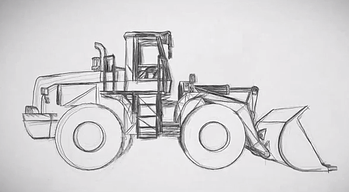 With a large assembly, there are a lot of interconnected parts, which makes it very complex to work with. Often, the model is so complex and it has so many parts that it’s hard for your CAD system to load it all up easily or quickly. This wastes time and means you can’t get on with your work. Also, with large assemblies, it is harder to ensure that all of the different parts work together. With more parts, there are more chances for things to go wrong.
With a large assembly, there are a lot of interconnected parts, which makes it very complex to work with. Often, the model is so complex and it has so many parts that it’s hard for your CAD system to load it all up easily or quickly. This wastes time and means you can’t get on with your work. Also, with large assemblies, it is harder to ensure that all of the different parts work together. With more parts, there are more chances for things to go wrong.
How can you access a large assembly more easily?
Most of the time, you’ll only be working on one part of the entire assembly. This means there will be times that you can just open up this one part and now have to worry about the difficulties of opening the whole assembly.
But, there are times when this won’t work. How can you be sure that the single part you are working on is the right one without seeing it in the context of the whole model? Also, when you start to make changes to an individual part, you need to be able to see how these affect the rest of the model, as the changes you make on your part can hinder and restrict other parts.
There are other reasons you might want to see the whole assembly. For example, you need to make sure that the finished model looks right when it’s all together.
So, what’s the trick? You need to be able to see the whole model, but you don’t need all of the detail contained in the whole model. This means when you are working on a specific part, you don’t need all of the detail relating to all the other parts in the assembly. By forgoing some of the detail initially, you can load up a light version of your whole assembly, which will open up faster. Think of it as almost like a sketch or an outline of the assembly. Then, you can get more and more detail as you zoom into the particular set of data that you require.
How can you make sure all the parts work together as they should?
When you are working on a part in a model, there is a wide range of different options that you can use for each individual part. Take, for example, a digger. There are a range of different seat options; a range of different bucket options; a range of different wheel options; as well as a whole host of other different parts. But, not every bucket option will work with every wheel option. And, not every seat option will work with every bucket option. This means in each large assembly there are a lot of different options and combinations to remember.
Trying to figure out which combinations work together will take a while. What you need to know is the options that are available based on each successive selection that you make. So, for example, say there is a particular wheel choice that you want to make. Then, you need to know which bucket options are going to be compatible with this choice. Suddenly, the choice of parts becomes a lot more straightforward.
By loading a light version of your large assembly, you can get it up and running quickly, while still making sure that you are working on the right part. You also know that you are not causing any clashes or interference problems with your model. You can also manage the configuration of the assembly by dynamically limiting your choices, based on your subsequent selections. All of this with no unnecessary waiting.
Want to know more about how to make working with large assemblies easier? Download our free 30-day trial of Creo Parametric and try it out for yourself:
